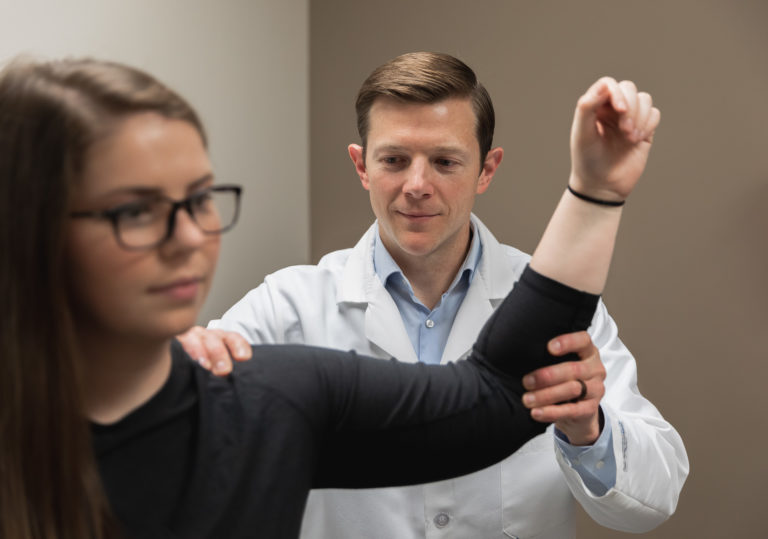
Scoliosis is a deformity that creates a sideways curvature of the spine. In many cases, the cause is unknown, and symptoms usually develop during growth spurts or just before puberty.
Scoliosis can be mild and managed without surgery, but in severe cases, the deformity can worsen and cause back pain and other symptoms, resulting in the need for spinal fusion surgery.
Spinal fusion surgery is the fusing together of two or more spinal vertebrae to eliminate motion between them. This fusion reduces pain, improves stability in the spine, and/or corrects the deformity caused by scoliosis.
If you have scoliosis, you might be wondering if spine surgery is the right treatment option for you. My goal as a spine surgeon is to help you make informed decisions about your health. Here are a few things to keep in mind when considering spinal fusion surgery:
Look for worsening symptoms of scoliosis.
The physical symptoms of scoliosis appear gradually and can initially go unnoticed. Curves in the spine may get worse as the body grows and therefore might require some form of treatment. Assess your physical appearance for signs and symptoms of scoliosis, and monitor for any change in appearance over time:
- Is your rib cage sticking out more on one side than the other?
- Is one hip higher than the other?
- Is there an uneven appearance in the shoulders and/or waist?
- Is one shoulder blade more prominent than the other?
Schedule regular checkups with your doctor.
Mild cases of scoliosis usually require regular exams to monitor the curvature of your spine and look for worsening symptoms. X-rays, CT scans or MRI scans are sometimes needed.
Try nonsurgical treatment options for scoliosis first.
If signs of scoliosis are present, you should always see your doctor to discuss your options. Before considering spinal surgery, you will need to have exhausted all nonoperative treatments for scoliosis and its symptoms, including physical therapy, braces, pain-relieving drugs and interventional physiatry techniques such as epidural steroid injections. If you’ve tried those treatments and your symptoms still significantly affect your quality of life, we’ll discuss spinal fusion to treat your scoliosis.
I share more about spinal fusion surgery in the video below:
For a patient’s perspective on her experience with spinal fusion surgery, watch Dee’s story in the video below:
For specific questions or concerns on this or other neck and back conditions, please make an appointment by calling 913-319-7600.
 About the Author: Theodore Koreckij, M.D. is a board-certified and fellowship-trained orthopedic surgeon specializing in conditions of the spine, including adult degenerative disorders and conditions associated with metastatic disease.
About the Author: Theodore Koreckij, M.D. is a board-certified and fellowship-trained orthopedic surgeon specializing in conditions of the spine, including adult degenerative disorders and conditions associated with metastatic disease.
***
The medical information contained in the Dickson-Diveley Orthopaedics website is provided to increase your knowledge and understanding of orthopedic conditions. This information should not be interpreted as a recommendation for a specific medical or surgical treatment plan. As each patient may have specific symptoms or associated problems, the treatment regimen for a specific patient may not be the proper treatment for another.
Gaining knowledge and understanding of a particular problem or condition is the first step in any medical treatment plan. I believe the information presented on our website will be helpful for those individuals experiencing ankle pain, or other related problems. However, this information is not intended to replace the advice of your family physician. You are encouraged to consult with your physician to discuss any course of treatment presented or suggested.


